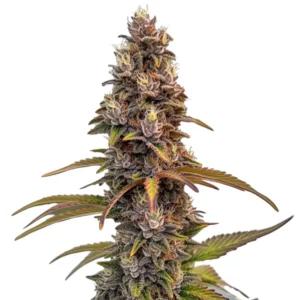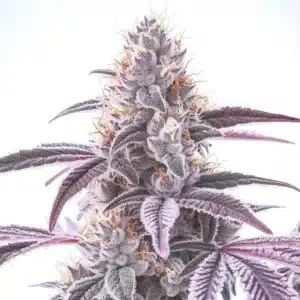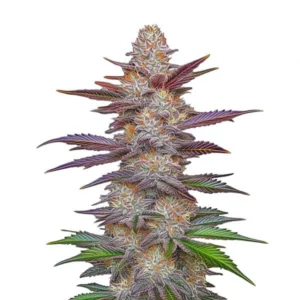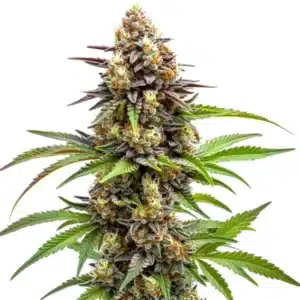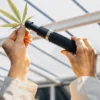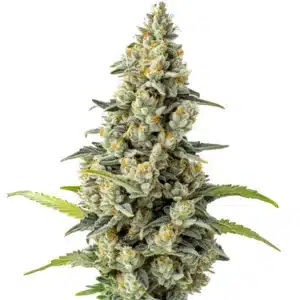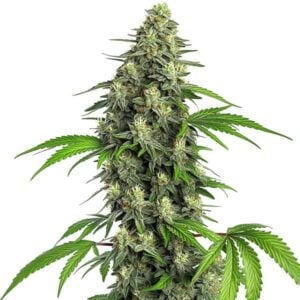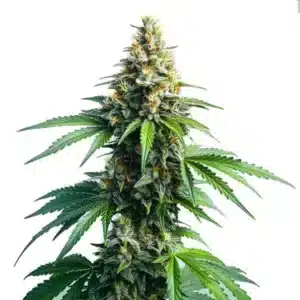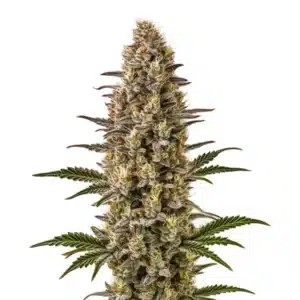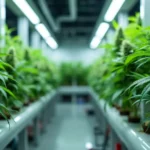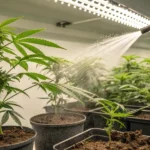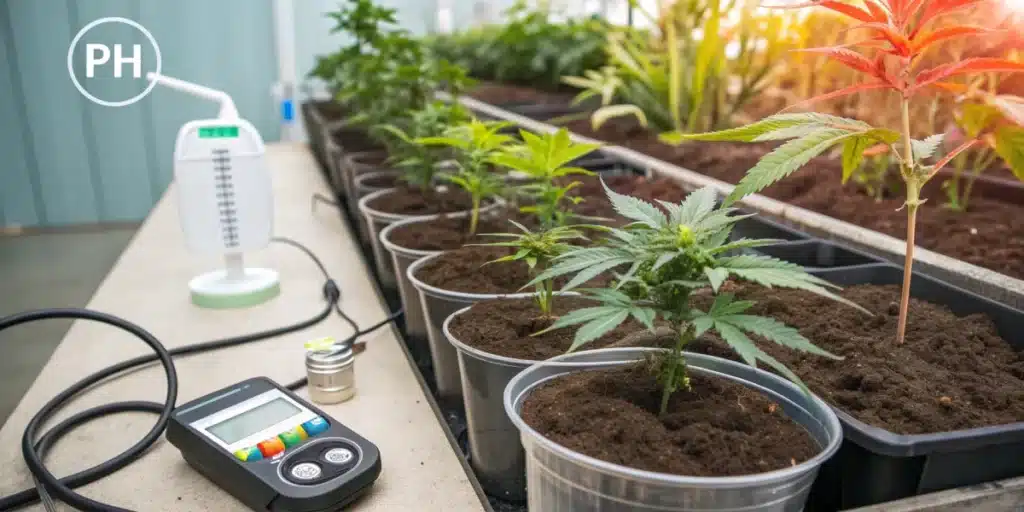
Choosing the Best pH for Cannabis to Maximize Growth
Achieving the best pH for cannabis is fundamental for cultivating healthy plants and maximizing yields. Whether you’re growing in soil, hydroponics, or soilless mediums, maintaining the right pH balance ensures your plants can absorb nutrients effectively, leading to robust growth, vibrant foliage, and potent buds.
The optimal pH range varies depending on the cultivation method. Soil growers should aim for a pH between 6.0 and 7.0, while hydroponic and soilless setups thrive in a slightly more acidic range of 5.5 to 6.5. Sticking to these ranges allows cannabis to access the essential nutrients it needs without experiencing deficiencies or toxicities that can hinder development.
Recommended Strains
Peachez
|
|
THC | 22% - 26% (High) |
|
|
Type | Feminized |
|
|
Yield | High |
|
|
Phenotype | 50% Indica / 50% Sativa |
Peanut Butter Breath
|
|
THC | 24% - 28% (High) |
|
|
Type | Feminized |
|
|
Yield | Low |
|
|
Phenotype | 50% Indica / 50% Sativa |
Why the Best pH for Cannabis Matters
Nutrient Absorption Efficiency
Cannabis plants require a variety of macronutrients and micronutrients to thrive, and the best pH for cannabis is a key factor in their availability. When the pH strays outside the ideal range, essential nutrients such as nitrogen, phosphorus, and potassium become unavailable to the roots, resulting in slow growth, weak stems, and discolored leaves. Ensuring the right pH balance allows for efficient nutrient uptake, supporting healthy plant development from seedling to harvest.
Avoiding pH-Related Problems
Incorrect autoflower pH level can lead to several cultivation issues such as nutrient lockout, stunted growth, and leaf discoloration. Without proper monitoring and adjustments, pH imbalances can go unnoticed, causing long-term damage to plant health. Regular testing and fine-tuning of autoflower pH level help to avoid these pitfalls, keeping your plants thriving throughout all growth stages.
Promos & Deals
How to Measure and Adjust pH Levels
Tools for pH Monitoring
Accurate pH measurement is crucial for maintaining the best pH for cannabis. Growers can choose from various tools, such as:
- Digital pH meters: These provide precise readings and are easy to use.
- pH test strips: A cost-effective option that gives a general idea of pH levels.
- Soil pH testers: Designed specifically for soil-based cultivation, helping growers monitor root-zone pH.
It’s important to check the pH of both your nutrient solution and runoff water regularly, as fluctuations can occur over time.
Adjusting pH Levels
If pH levels drift too high or too low, adjustments can be made using:
- pH Up and pH Down Solutions: These are commercial products designed to quickly correct pH levels.
- Organic Options: Ingredients such as vinegar, lemon juice, or baking soda can serve as natural alternatives, but they must be used with caution to avoid sudden swings.
- Buffering Agents: Adding dolomite lime to soil can help maintain stable pH levels over time.
pH Considerations for Different Growing Mediums
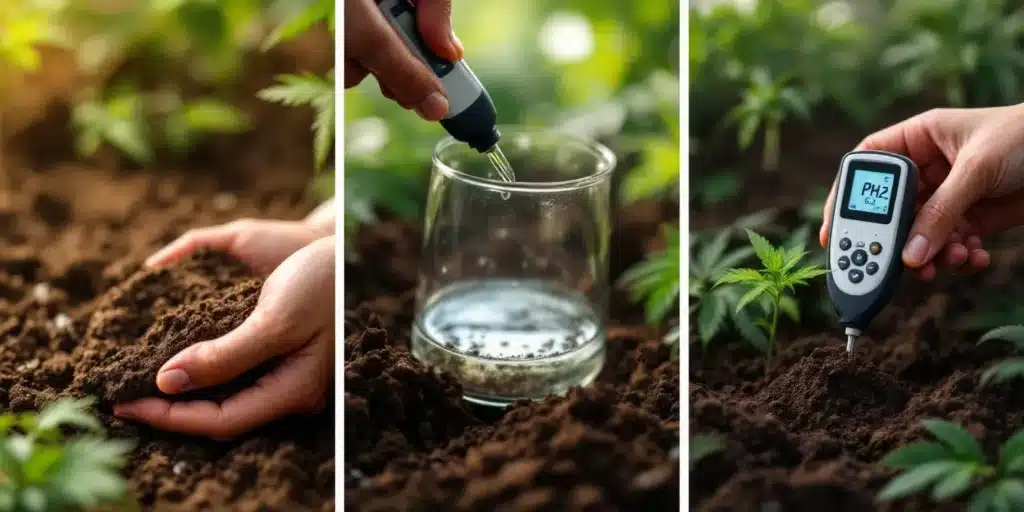
Soil-Based Cannabis Cultivation
For growers using soil, the best pH for cannabis falls within the range of 6.0 to 7.0. Soil acts as a natural buffer, helping to regulate fluctuations, but over time, watering with incorrect pH can alter its balance. Utilizing organic soil amendments such as compost, worm castings, and biochar can contribute to a more stable pH environment.
Hydroponics and Soilless Media
Hydroponic and soilless systems require a slightly lower pH range, typically between 5.5 and 6.5. Since these systems lack the buffering capacity of soil, pH levels can fluctuate more frequently, making consistent monitoring essential. Automated pH controllers can help maintain a stable environment by adjusting levels in real-time.
Common Signs of pH Imbalance in Cannabis
Yellowing Leaves
One of the most common signs of pH imbalance is yellowing leaves, often resulting from nutrient lockout. This issue can arise if the pH is too high or too low, preventing the plant from accessing key nutrients such as iron and nitrogen. Additionally, yellowing leaves can indicate other underlying issues such as overwatering or poor drainage, so careful monitoring is necessary to pinpoint the exact cause.
Another sign of pH-related yellowing is interveinal chlorosis, where the leaf veins remain green while the rest of the leaf turns yellow. This typically happens when iron absorption is hindered due to pH imbalances, affecting overall plant vitality and growth.
Nutrient Deficiencies and Toxicities
When pH levels fall outside the optimal range, nutrient deficiencies such as calcium or magnesium shortage may occur, leading to curling leaves and brown spots. These deficiencies can significantly weaken plant structure and lower the overall yield potential. In contrast, excessively acidic or alkaline conditions can lead to nutrient toxicity, causing burnt leaf tips, distorted growth, and an overload of certain nutrients, which can become harmful to the plant.
Cannabis plants affected by toxicities may exhibit signs such as dark, overly lush growth or brittle, clawing leaves. Recognizing and addressing these issues early by adjusting pH levels can prevent long-term damage and restore healthy growth patterns.
Slow Growth and Poor Yields
A cannabis plant struggling with pH imbalances will grow slowly and produce fewer buds with lower potency. Ensuring a proper pH range can significantly enhance the plant’s ability to develop strong roots, healthy foliage, and abundant flowers. Poor growth may also manifest in delayed flowering times and reduced resin production, ultimately affecting the quality of the final product.
Taking proactive steps to maintain pH balance ensures vigorous growth throughout the vegetative and flowering stages, allowing for maximum yield and quality.
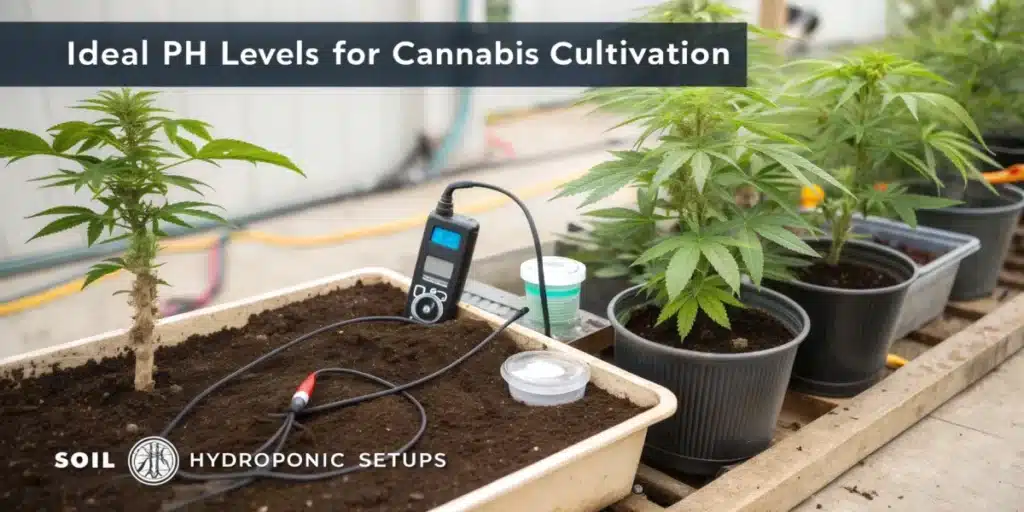
Tips for Maintaining the Best pH for Cannabis
Consistent Monitoring
Frequent testing of water, nutrient solutions, and soil runoff is key to maintaining optimal pH levels. Monitoring your grow medium at least once a week can help prevent major fluctuations that could harm your plants. Investing in a high-quality digital pH meter and calibration solutions can provide accurate readings and peace of mind.
Additionally, keeping a detailed log of pH readings over time can help identify trends and potential issues before they escalate, allowing growers to make informed adjustments proactively.
Using Filtered or pH-Adjusted Water
Tap water often contains minerals and chemicals that can alter pH levels. Using filtered or pH-adjusted water ensures consistency and prevents unexpected shifts in pH. Reverse osmosis (RO) systems are an excellent investment for serious growers, as they remove impurities and allow for greater control over water quality.
Using stabilized water sources also helps reduce the risk of introducing contaminants that could contribute to pH fluctuations, promoting a stable environment for cannabis plants to thrive.
Selecting pH-Stable Nutrients
Choosing nutrient solutions specifically designed for cannabis can make a significant difference. Many high-quality fertilizers include pH stabilizers to simplify maintenance and provide consistent results. Look for nutrient brands that cater to the specific needs of soil or hydroponic setups to ensure compatibility with your growing medium.
Some nutrient lines offer pH-perfect technology, which automatically adjusts the pH of the nutrient solution to the ideal range, making pH management more accessible and less time-consuming for growers.
Flushing When Necessary
If pH levels become severely imbalanced, flushing the growing medium with pH-balanced water can help reset the system and restore the correct range. Flushing is especially useful before transitioning into the flowering phase to remove any salt buildup and provide a fresh start for nutrient uptake.
Performing regular flushes also prevents nutrient imbalances that could accumulate over time, ensuring that the plant continues to receive essential elements in the right proportions.
FAQs About The Best pH for Cannabis
What is the best pH for cannabis in soil?
The ideal pH range for cannabis grown in soil is between 6.0 and 7.0. This range ensures that essential nutrients remain available to the plant and helps prevent nutrient lockout.
What is the best pH for cannabis in hydroponics?
For hydroponic and soilless setups, the optimal pH falls between 5.5 and 6.5. Maintaining this slightly more acidic environment allows for better nutrient uptake in water-based systems.
How often should I check the pH of my cannabis plants?
It’s recommended to check the pH of your nutrient solution and runoff water at least once a week. More frequent monitoring may be required in hydroponic systems where fluctuations can occur more rapidly.


